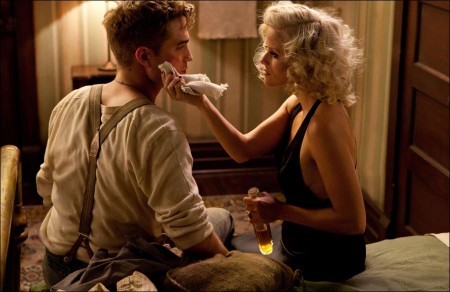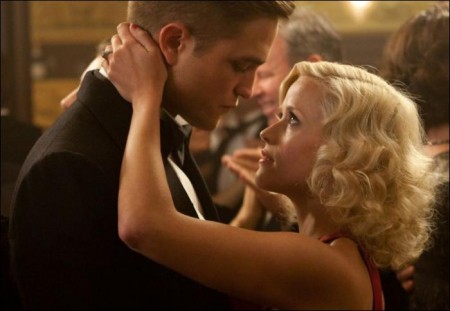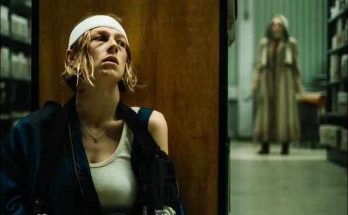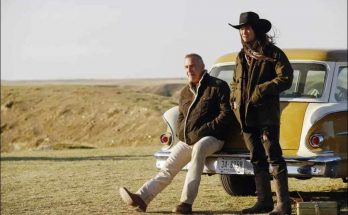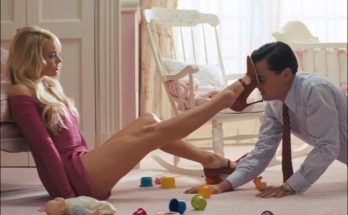In realizing Francis Lawrence’s vision of circus life during the Great Depression, the director and his design chiefs worked to merge the rigorously authentic with the hauntingly romantic. “Everyone that came on board this movie loved the era and loved the circus,” notes Lawrence. “We wanted ‘Water for Elephants’ to be real and genuine, but we also wanted to convey a very romantic notion of what circus life was like in the 1930s.”
The principal set was constructed in Piru, California. The Southern California location was chosen for its close proximity to the exotic animals required by the story, as well as for its access to railroad cars and tracks. The company also filmed in various other Southern California locations, including the Twentieth Century Fox backlot, which was home to a glorious circus parade. The production also made a quick stop in Chattanooga, Tennessee, to make use of some period trains.
The physical layout of the massive Piru-based production encompassed tents for the big top, a menagerie, a tent for the “Coochie Girls,” a star tent for Marlena, and several other smaller tents. The largest tent – the Big Top – measured 160-feet by 100-feet; its bleachers could hold up to 800 people. “One of our goals [in creating the fictional Benzini Bros. Circus] was to create our own version of a backlot where we would have complete freedom to shoot wherever we wanted and have lots of depth and authenticity,”
Lawrence explains. “But we built our circus just as a second rate circus would have built theirs, back in its day. The tents were put up with the same rigging; the train cars were outfitted with the appropriate accessories; the costumes were all period-authentic; and the casting for our circus employees was top notch. All of these elements came together to create a beautiful, authentic atmosphere that inspired us. It was like time traveling to the ‘30s, every morning.”
The filmmakers already had been given a head start in their design work, courtesy of the sharp detail and descriptions in Sara Gruen’s novel, many of whose readers felt like they were experiencing the sights, sounds and smells of a struggling ‘30s circus. Production designer Jack Fisk, whose frequent collaborations with renowned filmmaker Terrence Malick are noted for their creations of natural, real and textured worlds; director of photography Rodrigo Prieto, whose meticulous attention to visual and dramatic detail are evident in such films as Amores Perros, Brokeback Mountain and the recent Wall Street: Money Never Sleeps; and costume designer Jacqueline West, a two-time Oscar nominee, most recently for The Curious Case of Benjamin Button, were instrumental in making WATER FOR ELEPHANTS’ Benzini Bros. look unlike any other fictional big screen circus.
When arriving each day at the set he had designed, Fisk shared Francis Lawrence’s feeling of having traveled through time. “There were moments when I walked into our Big Top – and with the practical lighting, the bleachers we built, and the smell of the animals – it was like going back in time. Those are moments I live for. That tent was alive.”
That realism stems in large part from Fisk’s prodigious research. He spent hours combing through books about the circuses of the era, and through tens of thousands of period photographs. “Those old black-and-white photos of the canvas tents were beautiful because they’re lit in a beautiful tungsten light, but you can see the mold, dirt, footprints, grass stains, mud and dust,” Fisk recalls. “It looks very real and tactile, and that’s what we were aiming for with our circus.”
The work of costume designer Jacqueline West was instrumental in creating the dichotomy between the circus glitter and the world outside the big top in Depression-era America. West’s designs for the principals, including August and Marlena, were vibrant with color, while the background audience wore a more muted, Depression-appropriate palette. “I wanted all the color and glitter to jump out of the circus itself, away from the more monochromatic crowd,” notes West.
Marlena’s outfits were based on those worn by 1930s film stars, as well on those that adorned real circus women of the era. “As Marlena, Reese’s outfits included a beaded evening dress and parade costume with marabou feathers made from vintage antique pieces put together in a patchwork. Her evening gowns reflect those she saw at the movies, worn by some of the period’s top stars, including Jean Harlow, Carol Lombard and Constance Bennett.”
A testament to the sets’ mix of period realism and glamour – as well as to the filmmakers’ devotion to the novel – was Sara Gruen’s reaction when she visited the set. “I was speechless,” she remembers. “You know, a few years ago, all of this was entirely in my head, and now here it is. It’s so close to what I had imagined. It’s a very surreal experience.”
From the scripting stage to pre-production, through production and the final touches of post production as “Water for Elephants” neared its worldwide release, the filmmakers endeavored to bring to life this world, its characters, and a story of a forbidden attraction that becomes a lifelong love. “People have always wanted to have their ‘day at the circus’ – a joyful moment taking them outside their everyday lives,” notes Reese Witherspoon. “I hope that’s what we’ve done here: create something that people will enjoy.” Adds Francis Lawrence: “One of the reasons I did ‘Water for Elephants’ is because it has love, wish fulfillment, redemption, magic and beauty. I hope audiences latch on to all of those things.”
Related Link: Read full production notes for Water for Elephants >>
Visits: 79
